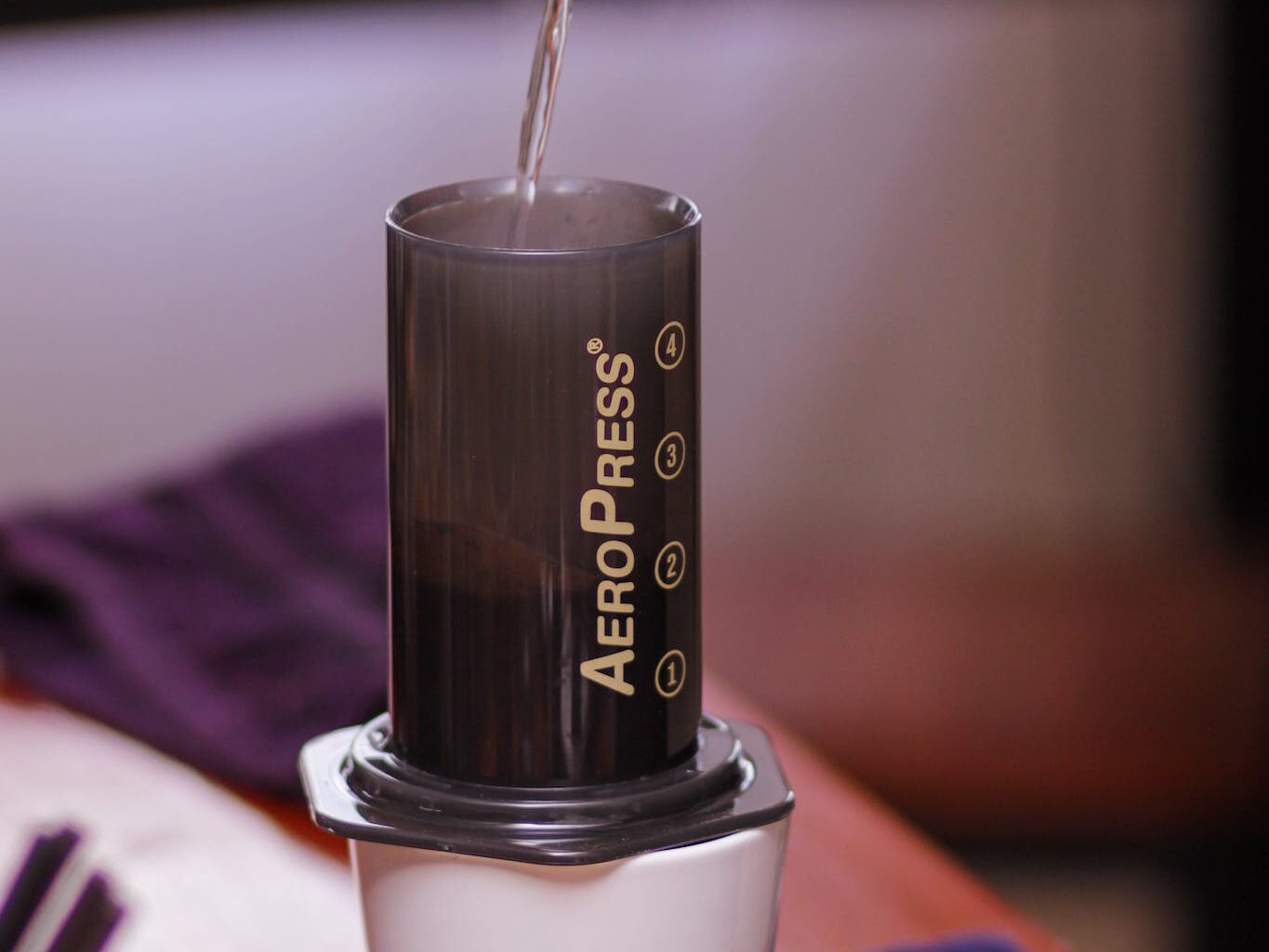How to Clean Nespresso Milk Frother: Step-by-Step Guide
There are some affiliate links below, but they are all products I highly recommend. For more info, view my disclosure here.
Cleaning your Nespresso milk frother is an essential part of maintaining its performance and extending its lifespan. Neglecting to clean it regularly can lead to clogs, buildup of milk residue, and even mold growth.
Fortunately, cleaning your Nespresso milk frother is a simple task that can be done in just a few minutes using basic household items.
To clean your Nespresso milk frother, you will need clean water and a non-abrasive sponge or cloth. The best way to clean it is to disassemble it and wash each part separately. This will ensure that all the milk residue is removed and prevent any clogs from forming. Note that it should never be put in the dishwasher or submerged in water.
Follow these simple steps to clean your Nespresso milk frother: first, remove the lid and pour out any remaining milk. Then, disassemble it by removing the whisk and the magnetic disk. Wash each part separately with clean water and a non-abrasive sponge or cloth. Rinse thoroughly and let air dry before reassembling. By following these steps regularly, you can keep your Nespresso milk frother in top condition and enjoy perfectly frothed milk every time.
Understanding Your Nespresso Milk Frother
If you are a Nespresso enthusiast, you know how important it is to have a perfectly frothed milk for your coffee. Nespresso milk frothers are designed to help you achieve that perfect froth with ease. In this section, we will take a closer look at the different types of Nespresso milk frothers and their components and functionality.
Types of Nespresso Frothers
There are two types of Nespresso milk frothers – electric milk frothers and the Nespresso Aeroccino milk frother. The electric milk frother is a standalone device, while the Aeroccino is designed to be used with a Nespresso machine.
The electric milk frother is a popular choice for those who prefer a standalone device. It has a heating element and a whisk that froths the milk to perfection. It can be used with any type of milk, and it is easy to clean.
The Nespresso Aeroccino milk frother is designed to be used with Nespresso machines. It is available in two versions – one that froths milk and another that froths and heats milk. The Aeroccino is easy to use and produces a perfect froth every time.
Components and Functionality
Regardless of the type of Nespresso milk frother you have, they all have similar components and functionality. The main components of a Nespresso milk frother are the heating element, the whisk, the electrical contacts, and the printed circuit board.
The heating element is responsible for heating the milk to the desired temperature. The whisk is responsible for frothing the milk to create a perfect foam. The electrical contacts and the printed circuit board are responsible for controlling the temperature and the frothing speed.
To use your Nespresso milk frother, simply pour the milk in, select the desired frothing option, and press the button. The frother will do the rest of the work for you, and you will have a perfect frothed milk in no time.
Understanding your Nespresso milk frother is essential to achieving a perfect froth every time. Whether you have an electric milk frother or the Nespresso Aeroccino milk frother, they all have similar components and functionality. With proper care and maintenance, your Nespresso milk frother will continue to produce perfect frothed milk for your coffee for years to come.
Daily Cleaning Routine
Keeping your Nespresso milk frother clean is essential to ensure that it functions efficiently and produces high-quality frothed milk. Here is a simple daily cleaning routine that you can follow to keep your milk frother in top condition.
After Each Use
After each use, clean the milk frother to prevent milk residue from building up. To do this, you should remove the milk jug from it and rinse it with warm water. Use a damp cloth to wipe down the exterior of it and the milk jug to remove any milk residue.
Dealing With Milk Residue
If you notice that there is milk residue on the frother or the milk jug after cleaning, you can use a cleaner spray specifically designed for stainless steel to remove it. Simply spray the cleaner onto a damp cloth and wipe down the affected areas. Be sure to rinse the milk jug thoroughly with warm water after using the cleaner.
To prevent milk residue from building up in the first place, ensure that you are using the correct amount of milk for each frothing cycle. Overfilling the milk jug can cause milk to spill over and create a mess, while underfilling it can cause the milk to burn and stick to the sides of the jug.
Cleaning your Nespresso milk frother on a daily basis is essential to ensure that it functions efficiently and produces high-quality frothed milk. By following these simple steps, you can keep it in top condition and enjoy delicious, frothed milk every time.
Deep Cleaning Process
Cleaning your Nespresso milk frother on a regular basis is essential to maintain its performance and prolong its lifespan. While regular cleaning involves rinsing it with hot water after each use, deep cleaning is required to remove any buildup or residue that may have accumulated over time. Here is a step-by-step guide on how to deep clean your Nespresso milk frother:
Descaling the Frother
Descaling is an important step in deep cleaning your Nespresso milk frother. Over time, calcium and mineral deposits can build up, affecting the taste and quality of your milk froth. To descale your frother, follow these steps:
- Fill with equal parts of water and descaling solution.
- Turn on and let it run until all the solution has been dispensed.
- Rinse thoroughly with hot water and dry it with a clean cloth.
Cleaning Electrical Components
Cleaning the electrical components of your Nespresso milk frother is important to prevent any damage to the appliance. Here is how to clean the electrical components:
- Unplug the frother and let it cool down completely.
- Use a soft cloth or brush to remove any dust or debris.
- Spray a small amount of contact cleaner onto a cloth and wipe the electrical components.
- Use a mild detergent and a damp cloth to clean the exterior.
- Rinse with hot water and dry it with a clean cloth.
By following these steps, you can ensure that your Nespresso milk frother stays clean and performs at its best. Remember to deep clean it at least once a month to maintain its performance and prolong its lifespan.
Troubleshooting Common Issues
If you’re experiencing issues with your Nespresso milk frother, don’t worry – there are a few common issues that can be easily resolved.
Red or Blue Light Errors
If you’re noticing a red or blue light error on your milk frother, it could be due to a burnt-out heating element or a new thermocouple that needs to be installed. To troubleshoot this issue, try the following steps:
- Unplug it and let it cool down for at least 30 minutes.
- Once cooled, remove the lid and check the heating element for any signs of damage or discoloration. If it appears burnt-out, a replacement may be necessary.
- If the heating element looks fine, check the thermocouple for any signs of damage or wear. If it needs to be replaced, contact Nespresso customer service for assistance.
Frother Not Heating
If your milk frother is not heating properly, there could be a few possible causes. To troubleshoot this issue, try the following steps:
- Make sure it is plugged in and turned on.
- Check the power cord for any signs of damage or wear. If it appears damaged, replace it immediately.
- If the power cord looks fine, check the temperature setting. It should be set to the appropriate temperature for your desired milk froth.
- If the temperature setting is correct, try cleaning with a soft cloth and warm, soapy water. Make sure to rinse thoroughly and dry completely before using again.
By following these troubleshooting steps, you should be able to resolve most common issues with your Nespresso milk frother. If you continue to experience problems, don’t hesitate to contact Nespresso customer service for further assistance.
Best Practices for Frother Maintenance
Choosing the Right Milk
The type of milk you use can have a significant impact on the longevity of your Nespresso milk frother. It is recommended to use fresh, cold milk with a fat content of at least 3%. This type of milk produces the best froth and is less likely to clog. Avoid using milk substitutes such as almond or soy milk as they can cause damage due to their different protein content.
Preventing Damage
To ensure your Nespresso milk frother stays in good condition, follow these steps:
- Do not overfill. The maximum capacity is indicated on the device. Overfilling can cause milk to overflow and cause damage.
- Clean after each use. This will prevent milk residue from building up and clogging. Follow the cleaning instructions provided by Nespresso.
- Do not use abrasive cleaners or scrubbers to clean. This can cause damage to the non-stick surface and affect the performance.
- Store in a dry place. Moisture can cause damage over time.
By following these best practices, you can ensure that your Nespresso milk frother stays in good condition and produces high-quality frothed milk every time.






